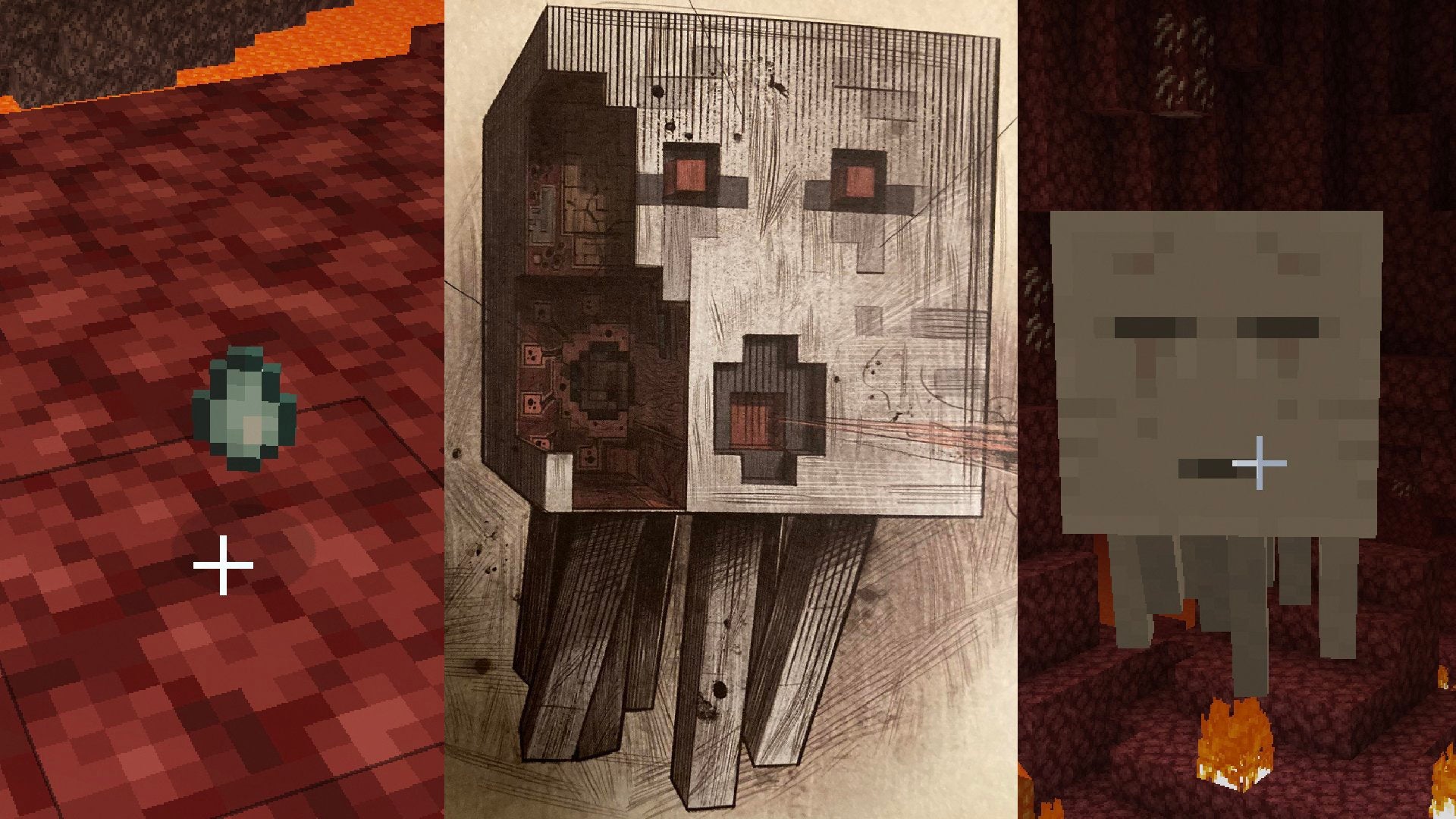![]() Key Takeaway
Key Takeaway
As stated in Minecraft: Mobestiary—a book created by Mojang AB and the Official Minecraft Team—Ghasts are living organisms that have skin, stomachs, and tear ducts.
Ghasts are not ghosts, cats, or machines.
In Minecraft, a Zombie is a rotting humanoid, a Creeper is an explosive monster that creeps up on you, and a Spider is an aggressive arthropod—but what is a Ghast supposed to be? Many players assume it’s some sort of ghost; however, it’s not technically undead…
Mojang Shows Us the Biology of the Ghast in Minecraft
The short answer is that Ghast are living organisms native to the Nether, similar to Piglins and Hoglins. In Minecraft: Mobestiary, a guide and tips book created by Mojang AB and the Official Minecraft Team, there are detailed descriptions and images of many mobs—including the Ghast.
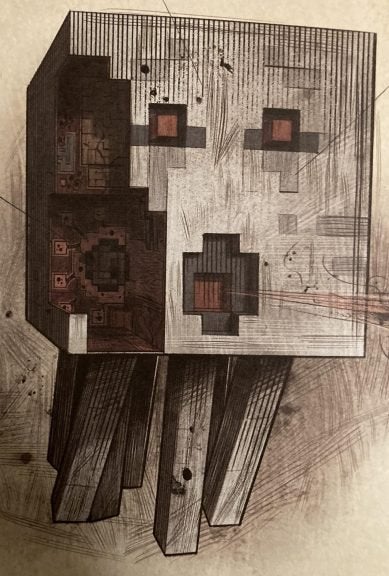
Analyzing the Notes Around the Illustration
In the illustration of the Ghast on page 60, you can clearly see inside the hostile mob. With just a glance, the fiend’s mouth, throat, and brain are easy to make out. Thanks to the helpful notes next to the image, we can glean more information about what’s being shown.
To the left, there’s a note pointing to the round organ in the bottom-left of the Ghast’s body that states the “Stomach is largely filled with fireballs,” confirming that Ghasts have stomachs. Therefore, they must have a digestive tract as well. This makes sense since it has a mouth. Thankfully, the other end of the digestive system is left unexplored. However, we’d wager that this “other end” is somewhere between all of the Ghast’s tentacles. This would be similar to a cephalopod’s rear end.
The caption above the Ghast mentions that the Ghast’s body is “covered with scars.” This means that the Ghast has organic flesh. Specifically, the kind that’s not covered in any hair, scales, or slime. It’s possible that these scars come from accidentally rubbing against rough terrain.
There’s also a message in the top-right that explains the dark marks under the Ghast’s eyes are “tracks of tears” left behind after lots of crying. While sad, this further cements the notion of the Ghast being a living organism, as machines and spirits cannot shed tears.
Examining the Text in the Ghast Section
Most of the text on page 61—the Ghast’s section—covers data about finding, fighting, and looting goods from the Ghast. However, there’s a passage just under the heading “Conquering the Ghast” that refers to the Ghast’s body as “soft” and that it’s “almost entirely filled with gas, and may easily be punctured.” Biologically, it makes sense for such a creature to be soft and mostly full of gas, as it spends all of its life in the air.
We get that the image looks a little bit mechanical; however, everything in this official source makes it painfully clear that Ghasts are living organisms. With the main question answered, let’s delve even deeper!
Investigating the Ghast Through Minecraft Gameplay
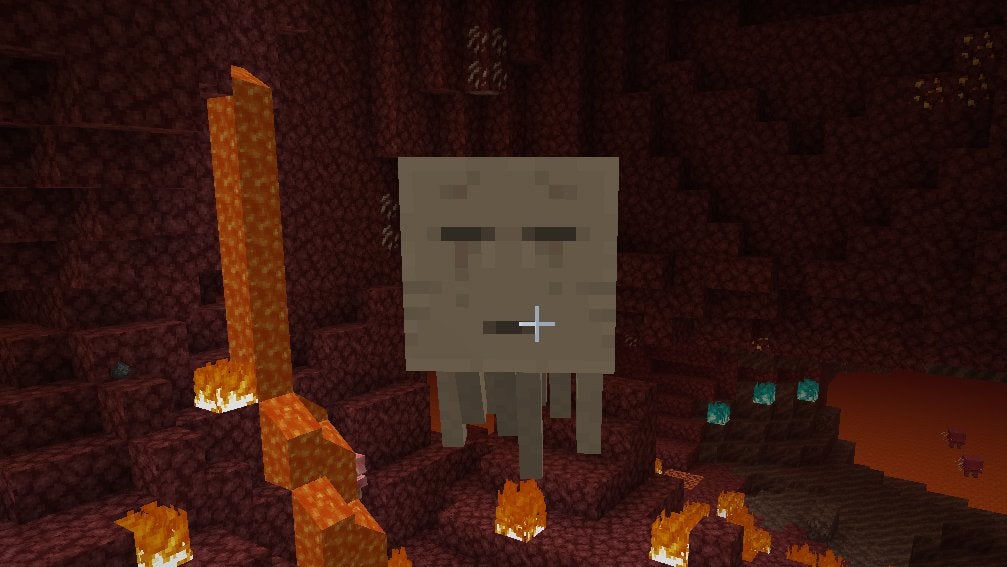
We took a trip down various rabbit holes when researching what a Ghast in Minecraft could be. The first avenue we investigated is every bit of data about Ghasts found in-game, from mechanics to Advancement text. We could not find anything directly stating what Ghasts are within the blocky world’s multiple dimensions, but we did learn what they’re not.
Ghasts Are Not Ghosts
When you first encounter a Ghast in the Nether, it’ll shoot fireballs at you while making horrid screeching sounds. This alone causes most players to classify it as a hostile mob—with good reason. The similarity between Ghasts and the most common depiction of a generic ghost from mythologies all over the world is striking. As such, players believing that the Ghast in Minecraft is a ghost of some sort is rational.
However, the Ghast is not an undead mob. Zombies, Skeletons, and Drowned are all undead mobs, which is verified by in-game mechanics that are fairly consistent with how such enemies are treated in other video games. However, Ghasts are different—they react to undead-specific effects differently than undead mobs like Zombies, Skeletons, and Drowned. The only exception is that—like undead mobs—they don’t instantly aggro nearby Wither Skeletons.
| Effect | Zombie Reactivity | Skeleton Reactivity | Drowned Reactivity | Ghast Reactivity |
|---|---|---|---|---|
| Instant Health | Takes damage | Takes damage | Takes damage | Does not take damage |
| Instant Damage | Does not take damage | Does not take damage | Does not take damage | Takes damage |
| Regeneration | Unaffected | Unaffected | Unaffected | Recovers health |
| Poison | Unaffected | Unaffected | Unaffected | Takes damage |
| Smite | Takes more damage | Takes more damage | Takes more damage | Does not take more damage |
| Drowning | Does not take damage | Does not take damage | Does not take damage | Takes damage |
| Wither Aggression | Is not attacked | Is not attacked | Is not attacked | Is not attacked |
Ghasts Are Not Cats
Ghasts are not Cats in any way, shape, or form. It’s been common knowledge for over a decade that the music composer for Minecraft—Daniel Rosenfeld, who goes by the username “C418” online—recorded his pet cat for some of the Ghast sounds. However, this has no relevance to the nature of Ghasts in-game. The audio source for an in-game mob has no connection to the lore of the mob itself. The same is true for audio sources for creatures in movies and TV.
For example, the screeches of the Nazgûl in The Lord of the Rings movies are composed of plastic cups scraping against hard surfaces. Yet no one thinks of the infamous ringwraiths as containers from which to sip drinks.
Ghasts Are Not Machines
While very geometrical in shape, this is no more a reason to dub a Ghast a machine than to do the same for a Squid or Cow in Minecraft. There’s a lot of misinformation online about Ghasts being some sort of mechanized torture device containing a forsaken soul of some kind. There is no proof for this whatsoever—or even any theories that make sense.
Looking back at the diagram and text in Minecraft: Mobestiary, there are also plenty of notes pointing out various organs and physical properties of Ghasts. They are fleshy beings, which makes them even stranger than if they were machines.
What Are Ghast Tears?
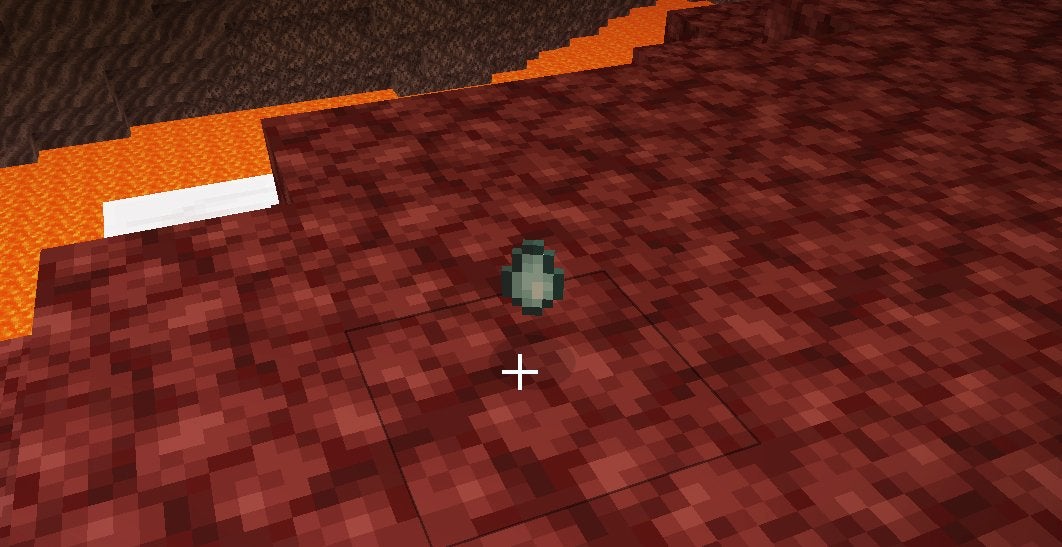
Ghasts cry, as exemplified by the tear tracks and the fact they drop a Ghast Tear—which is a literal teardrop. However, these cries and shedding of tears may not be as mournful as they appear.
For example, sea turtles and marine iguanas in real life excrete excess salt through their tears. They don’t do so because of any emotional reasons. It’s a biological function that prevents them from keeping too much salt in their bodies.
A similar biological trait may be true for Ghasts. They might cry and shed solid tears to excrete some unwanted substance from their bodies.
Oddly, Ghast Tears are only used in items that have regenerative properties. Specifically, they’re used to make Potions of Regeneration and End Crystals. The former heals entities and the latter revives the Ender Dragon.
A Misunderstanding of the “Uneasy Alliance” Advancement
The more keen players might have noticed the interesting phrasing of the “Uneasy Alliance” Advancement. Here it is:
Rescue a Ghast from the Nether, bring it safely home to the Overworld…and then kill it.
There’s a lot to unpack here.
Firstly, the text implies that you “rescue” a Ghast if you bring it from the Nether to the Overworld. This makes it seem as if you’re saving the Ghast from something…but you’re not. The Ghast is in no danger whatsoever in the Nether. The only threat to it is you—and you’re not from the Nether.
However, the Overworld is a lot more calm. From the player’s perspective, you’re doing something nice for the Ghast. With that said, the Ghast may not think so. To the Ghast, you’ve simply abducted it.
This is much like how people taking animals into their homes from the wild think they are “helping” an animal, when, in fact, they are not. They only believe they are helping when they are actually just kidnapping a creature.
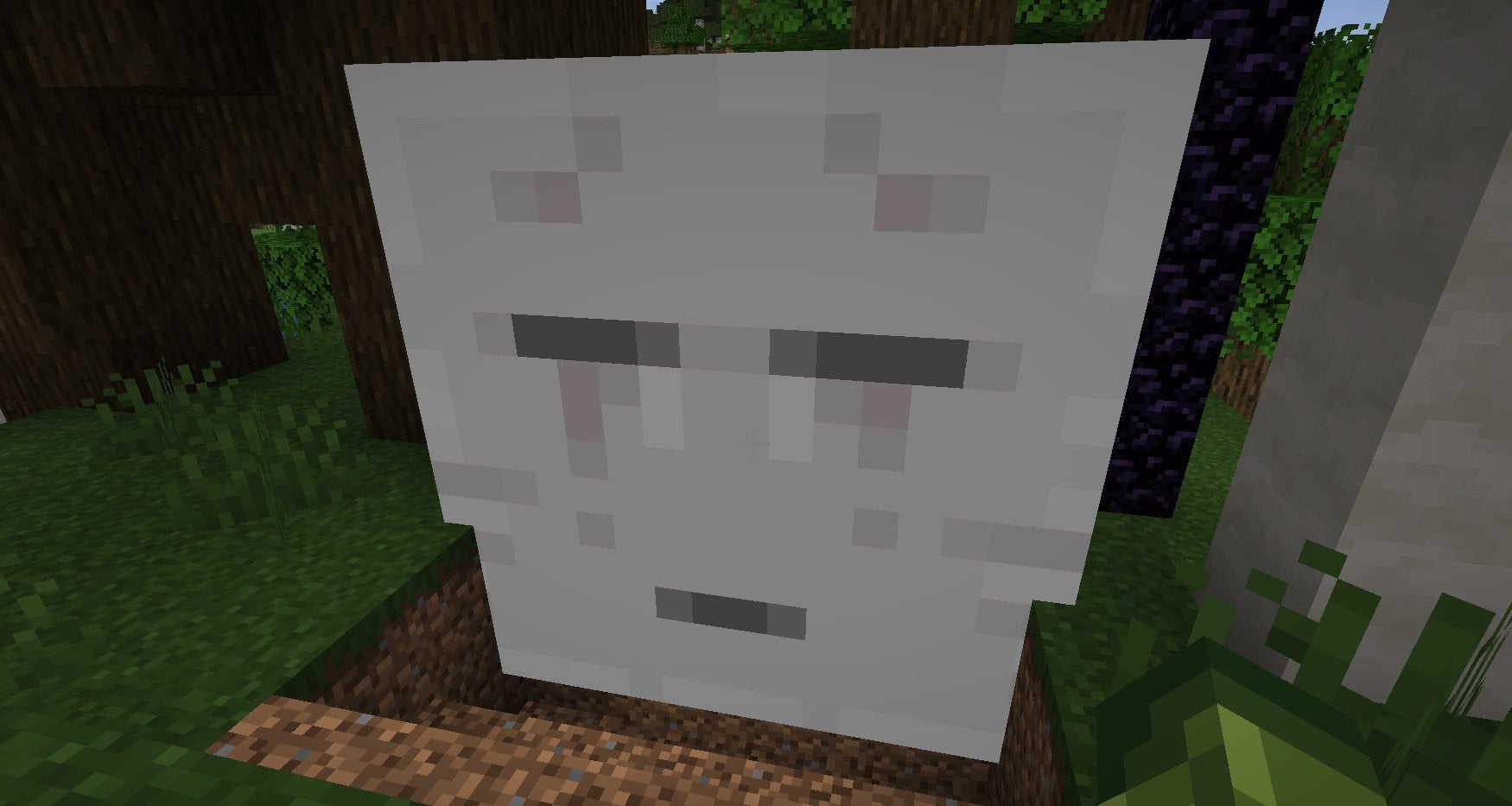
The next point of interest in the Advancement text is “bring it safely home to the Overworld.” This phrasing makes it seem like you’re bringing the Ghast home. While understandable, this is a misinterpretation. You’re bringing the Ghast to your home: the Overworld. The Ghast’s home is the Nether, as that’s where it spawns.
The word “safely” is meant for you. This Advancement is all about killing a Ghast, meaning that this hostile mob is not safe at all. Bringing a Ghast through a Nether Portal is way more dangerous for you, which is why the Advancement text uses the word “safely” here.
As such, Ghasts are not likely to be creatures originally from the Overworld. Their biology is remarkably well adapted to the Nether (for example, having fire immunity), so Ghasts most likely originated there.
The Origin of the Word “Ghast”
We’ll go back as far as the English language does for this investigative angle. If we go further back, we end up in Proto-Germanic, which then leads back to Indo-European tongues—both of which don’t truly have the same pronunciation and meaning of “Ghast” as we do in modern English. As such, we cut the trail off at Old English to remain on track.
“Gæstan”
The verb “gæstan” from Old English means to frighten or to torment. Both are very appropriate when describing Ghasts in Minecraft. Furthermore, this is one of the words that led to the modern English term “ghost.”
The word “gæstan” descends into “gasten” when we enter Middle English. Which, in turn, evolves into “gast” in modern English. Both of these also mean “to frighten.” Consistently, “gæstan,” “gasten,” and “gast,” are all verbs. You can clearly see where and why we got modern-day terms like “ghastly” and “aghast.”
On a related note, this is also where “geist” likely comes from, as in “poltergeist.”
“Gāst”
The Old English word “gāst” is a noun that has multiple meanings: spirit, ghost, breath, and demon respectively. Context is important in its usage, but you can get the general vibe of the word. Since it’s a noun, this is even more likely to have descended into the “ghost” term we’re familiar with today—more so than “gæstan.”
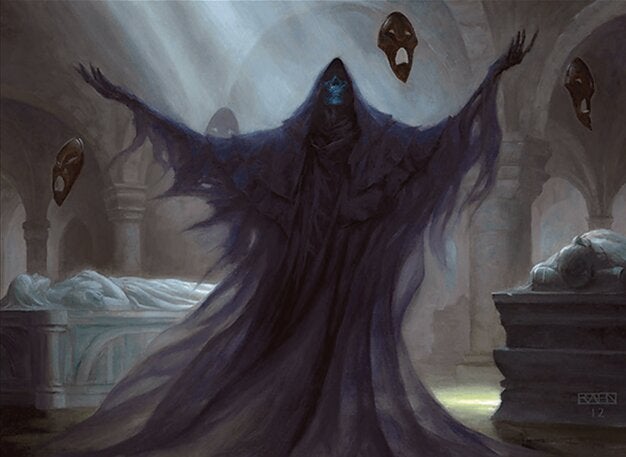
It’s also worth mentioning that the Middle English descendant of “gāst” is simply “gast” (for the most part). The transition from “gast” to the “ghost” of modern English is merely a matter of pronunciation.
Historical Usage of “Ghast” and Similar Terms
In pretty much every instance of its usage, the Old English and Middle English ancestors of the word “ghast” refers to ghosts, spirits, or other supernatural entities that were conceptually frightening.
A rare exception occurs when used in Christian prayers that reference the Holy Spirit—an aspect of the Abrahamic God. In Old English, “the Holy Spirit” is called “sē Hālga Gāst”—a word-by-word translation.
Another exception is when people refer to their own spirit (most likely when discussing their visible breath during cold times of the year) as a “gāst.”
In the end, the term “ghast” was originally used to refer to ghosts—which leaked into popular culture through books, movies, and games. You can see now how and why it was used for the Ghast in Minecraft.
Ghasts in Other Media
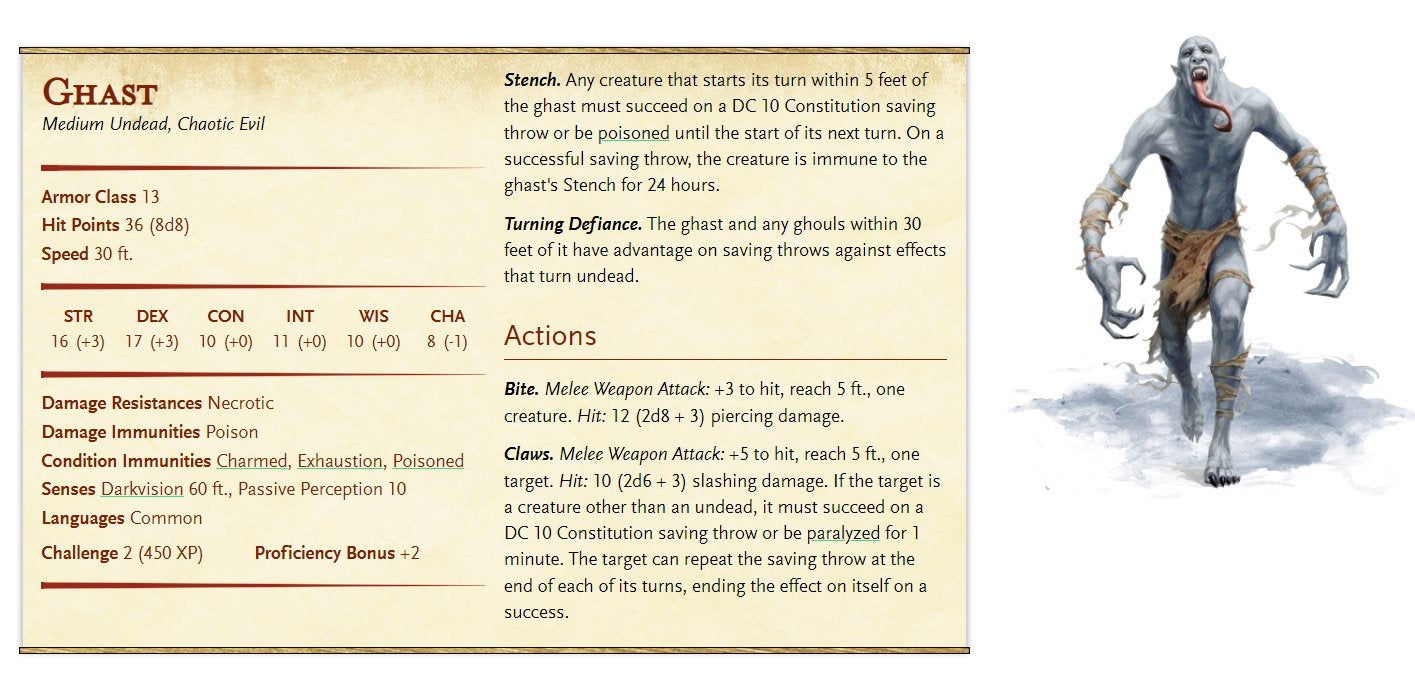
Minecraft isn’t the only form of media where Ghasts appear. However, it is the only appearance of this creature archetype that depicts them as giant jellyfish-like entities that shoot fireballs.
In other media, Ghasts are sometimes shown to be humanoid spirits, like in Runcible Jones and the Buried City by Ian Irvine. Another example where Ghasts appear as a type of specter is in Joseph Delaney’s Spooks series. These kinds of Ghasts are basically common ghosts found in other fantasy and horror stories.
Next, we have the more substantial Ghasts that harken back to Old English’s “gæstan” in that they are more frightening than ghostly in modern terms. Such Ghasts can be noted from Philip Pullman’s His Dark Materials series in the form of Cliff-Ghasts and Night-Ghasts, which are basically giant monstrous bats. Probably the most notable of the fleshy Ghasts come from Dungeons & Dragons, which are a medium undead creature that bears a strong resemblance to ghouls and other humanlike monsters that have long, sharp teeth and clawed fingertips.
While we can delve into the Ghasts of every franchise out there, we’ll end this note by mentioning the bizarre Ghasts found in H.P. Lovecraft’s short story The Dream-Quest of Unknown Kadath. These Ghasts are more like…hooved kangaroos. They bear no resemblance to the Ghasts in other media—a fact of which Lovecraft would probably be quite proud.
We hope all that wasn’t more than you wanted to know about the Ghast in Minecraft! Investigating gameplay details like this is super fun for us. From looking into the suspicious placements of demons in Dark Souls to examining Final Fantasy fan theories, we’ve got your back if you’re researching the mysteries of your favorite games.


